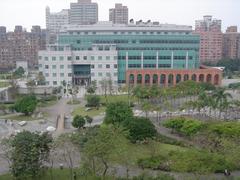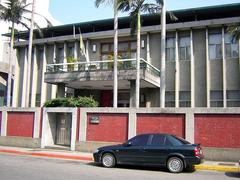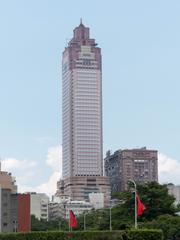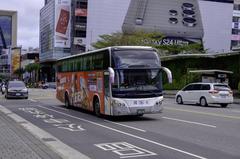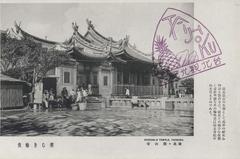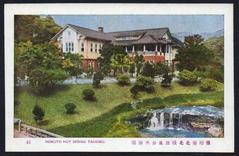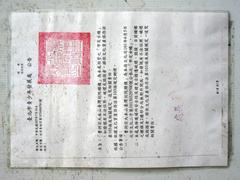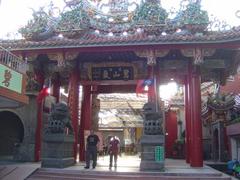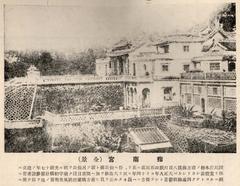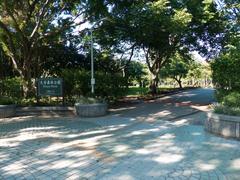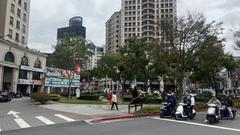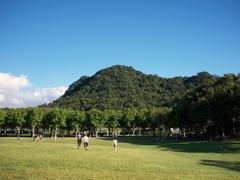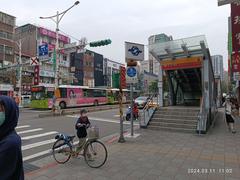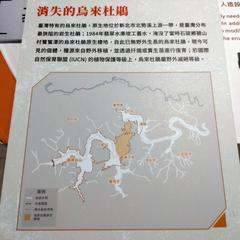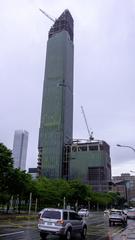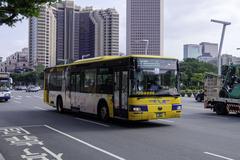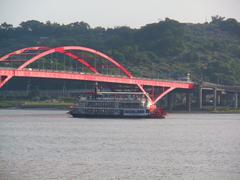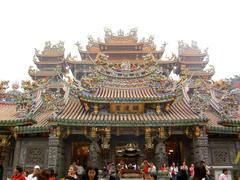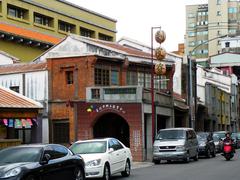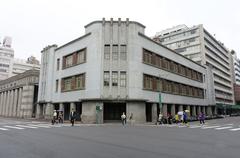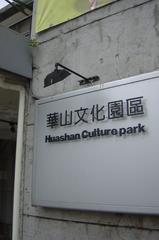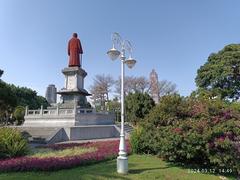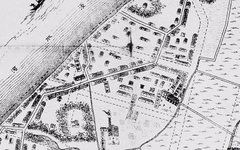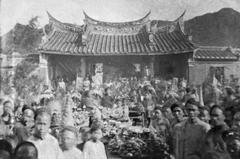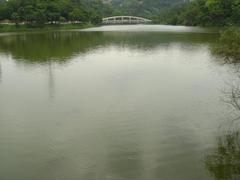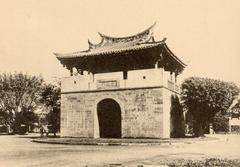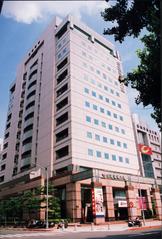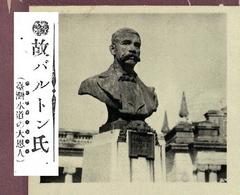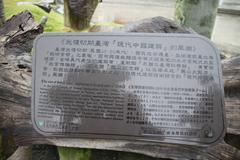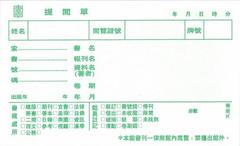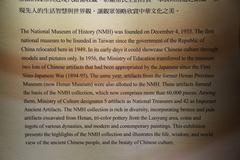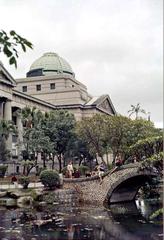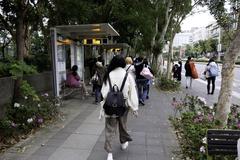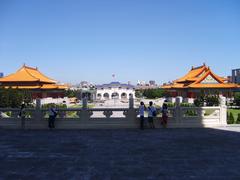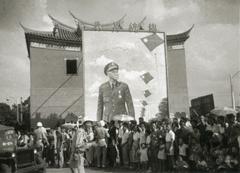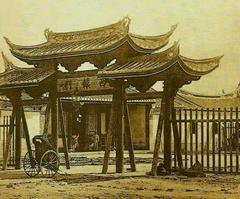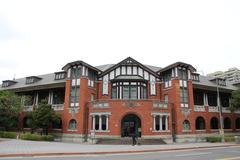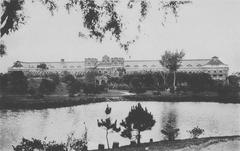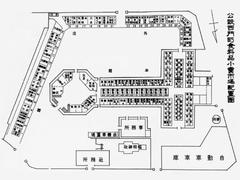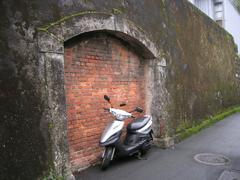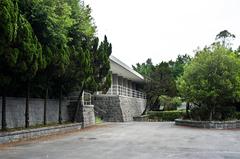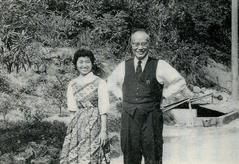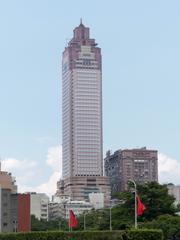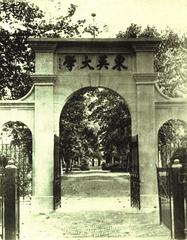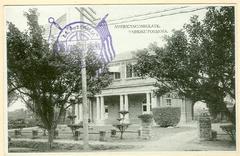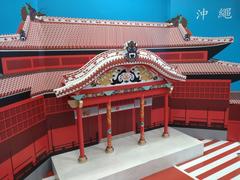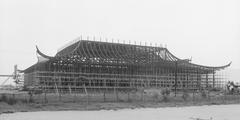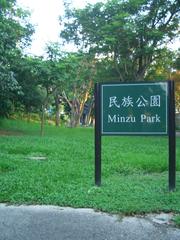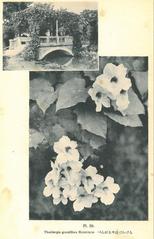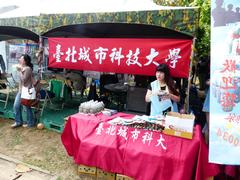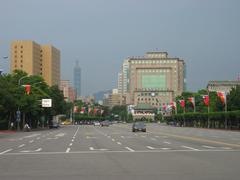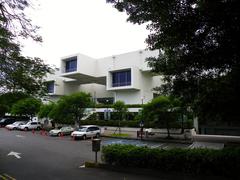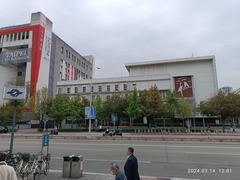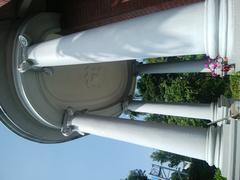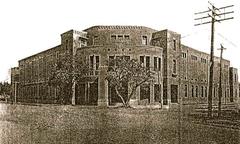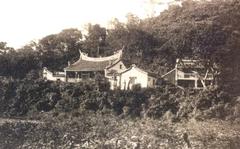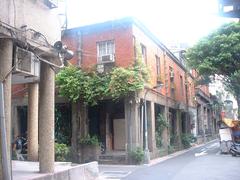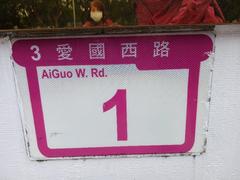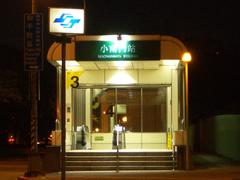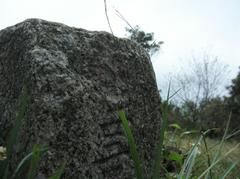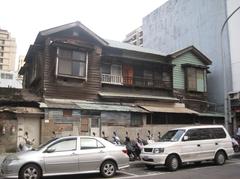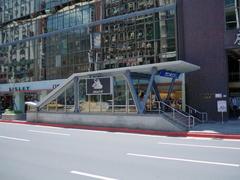
Former Xiamen Street Police Station Taipei: Visiting Hours, Tickets, and Historical Guide
Date: 04/07/2025
Introduction
Located in Taipei’s storied Wanhua District, the Former Xiamen Street Police Station stands as a vivid testament to Taiwan’s multifaceted past. Originally built during the Japanese colonial period (1895–1945), this heritage building weaves together architectural, social, and cultural narratives that reflect both the city’s transformation and the evolving identity of its communities. Today, the site serves as a cultural and educational center, offering visitors a unique lens through which to explore Taipei’s historical journey.
This comprehensive guide covers the history, architectural features, cultural significance, and practical visitor information—including opening hours, ticketing, and accessibility—making it an essential resource for anyone interested in Taipei’s historical sites.
Table of Contents
- Overview & Historical Context
- Origins and Evolution of Xiamen Street
- Japanese Colonial Architecture and Urban Planning
- Social and Cultural Significance
- Post-War Usage and Heritage Recognition
- Architectural Highlights
- Visitor Information (Hours, Tickets, Accessibility)
- Integration with Modern Taipei & Nearby Attractions
- Community Engagement and Educational Initiatives
- Digital Resources and Virtual Tours
- Frequently Asked Questions (FAQ)
- Summary & Visitor Tips
- References
Overview & Historical Context
The Former Xiamen Street Police Station was constructed in the early 20th century as part of the Japanese colonial administration’s modernization and public order initiatives in Taipei. Strategically placed in Wanhua—then a bustling commercial and cultural hub—the station was integral to the city’s governance and social fabric.
After the end of Japanese rule in 1945, the building continued serving as a law enforcement outpost under the Republic of China government, adapting to new administrative structures. Over time, as Taipei modernized rapidly, the station faced risks of demolition. However, heritage advocacy and city-led preservation efforts ensured its survival, transforming it into a vital cultural landmark (Taipei Quarterly).
Origins and Evolution of Xiamen Street
Xiamen Street, formerly known as “Kawabata” during the Japanese era, has long been a key artery in Taipei’s development. The street connected central Taipei with outlying districts, and its markets, shops, and institutions—including the police station—fostered vibrant community life (ThinkChina).
Japanese Colonial Architecture and Urban Planning
Reflecting the colonial government’s drive for modernization, the police station was built with a blend of Western and Japanese architectural influences. Key features include:
- Red Brick and Stone Construction: Durable materials signifying authority and permanence.
- Arched Windows and Doorways: Allowing natural light and ventilation, and softening the façade’s formality.
- Traditional Tile Roofing: Japanese-style eaves and tiles, well-suited to Taipei’s climate.
- Functional Layout: Administrative offices, communal spaces, and, historically, detention facilities—all organized for both security and efficiency (Taipei City Government).
The station’s design distinguishes it from traditional Taiwanese buildings and remains a rare example of intact Japanese-era police architecture in the city.
Social and Cultural Significance
Beyond its law enforcement role, the police station functioned as a social anchor within the Xiamen Street community. Its tea table and gardens were gathering points for residents, fostering trust and communication between police and locals. The station was also involved in local festivals and cultural events, reflecting its integration into everyday life (Polar Journal).
Post-War Usage and Heritage Recognition
After 1945, under ROC administration, the station maintained its place in community life. However, urban development in the latter 20th century threatened many such heritage structures. Advocacy from citizens and cultural organizations led to the station’s official designation as a protected historic site. Restoration efforts by the Taipei City Government preserved its integrity and repurposed it as a center for heritage education and community activities (Chloe’s Travelogue).
Architectural Highlights
Visitors can appreciate:
- Symmetrical, Red-Brick Façade: Meticulously restored, with original brickwork and stone details.
- Arched Entrance and Windows: Classic features of early 20th-century institutional design.
- Tile Roof and Wooden Eaves: Traditional elements preserved through expert restoration.
- Original Room Layouts: Administrative offices and communal spaces now serve as exhibition areas showcasing artifacts, photos, and documents related to Taipei’s policing and urban history.
Interpretive signage and multimedia displays enrich the visitor experience, providing context about the building’s architectural and social roles (Taipei Quarterly).
Visitor Information
Opening Hours:
- Tuesday to Sunday: 10:00 AM – 6:00 PM
- Closed Mondays and some public holidays
(Check ahead for special events or maintenance closures.)
Tickets & Admission:
- General admission is free; donations are encouraged.
- Special exhibitions or guided tours may require a nominal fee or advance registration.
Accessibility:
- Ramps, wide doorways, and accessible restrooms accommodate visitors with limited mobility.
Facilities:
- Restrooms, a small gift kiosk, and air-conditioned exhibition spaces.
- Multilingual signage and audio guides available.
How to Get There:
- MRT: Ximen Station (Blue/Green Line), Exit 1 or 6; 5–10 minute walk.
- Bus: Several routes stop nearby.
- Visitor Centers: The MRT Ximen Visitor Information Center offers maps and multilingual support.
Nearby Attractions:
- Ximending Pedestrian District
- Red House Theater
- Longshan Temple
- Bopiliao Historical Block
(Travels With Elle)
Integration with Modern Taipei & Nearby Attractions
Situated within Wanhua’s lively urban fabric, the Former Xiamen Street Police Station is connected by pedestrian pathways to prominent sites like the Red House Theater and Longshan Temple. The area’s blend of old and new creates an engaging environment for heritage tourism and daily life (Taipei Attractions Guide).
Community Engagement and Educational Initiatives
The station’s preservation is supported by active community involvement. Educational programs, heritage workshops, and volunteer opportunities engage both local residents and visitors. Partnerships with schools and universities enable research and student projects that deepen understanding of Taipei’s history.
Digital Resources and Virtual Tours
Virtual tours and high-resolution images are available via Wikimedia Commons, making the site accessible to remote learners and researchers worldwide.
Frequently Asked Questions (FAQ)
Q: What are the opening hours?
A: Tuesday to Sunday, 10:00 AM – 6:00 PM. Closed Mondays and public holidays.
Q: Is there an admission fee?
A: General admission is free; donations are encouraged. Special programs may have a small fee.
Q: How do I get there?
A: Take the MRT to Ximen Station (Blue/Green Line), Exit 1 or 6, and walk 5–10 minutes. Buses and taxis are also available.
Q: Is the site accessible?
A: Yes, with ramps and accessible restrooms.
Q: Can I take photos inside?
A: Non-flash photography is permitted. Tripods or commercial shoots require prior approval.
Q: Are guided tours available?
A: Yes, via local tour companies or scheduled educational programs. Check with visitor centers for details.
Summary & Visitor Tips
The Former Xiamen Street Police Station is a vital link to Taipei’s colonial past and modern identity. Its preserved architecture, accessible programming, and integration with vibrant Wanhua District make it a rewarding destination for history enthusiasts, families, and casual visitors alike. Enjoy free admission, educational exhibits, and the opportunity to explore nearby heritage sites.
For the latest on hours, events, and tours, consult the Taipei City Government Tourism website. Enhance your visit by downloading the Audiala app for audio tours and insider tips.
References and Further Reading
- Chloe’s Travelogue
- Taipei Quarterly
- Taipei Travel Quarterly
- NaviTaiwan
- ThinkChina
- Wikimedia Commons
- Taipei City Government
- Taipei Attractions Guide
- Travels With Elle
- EveryCulture
- Travellers Worldwide

